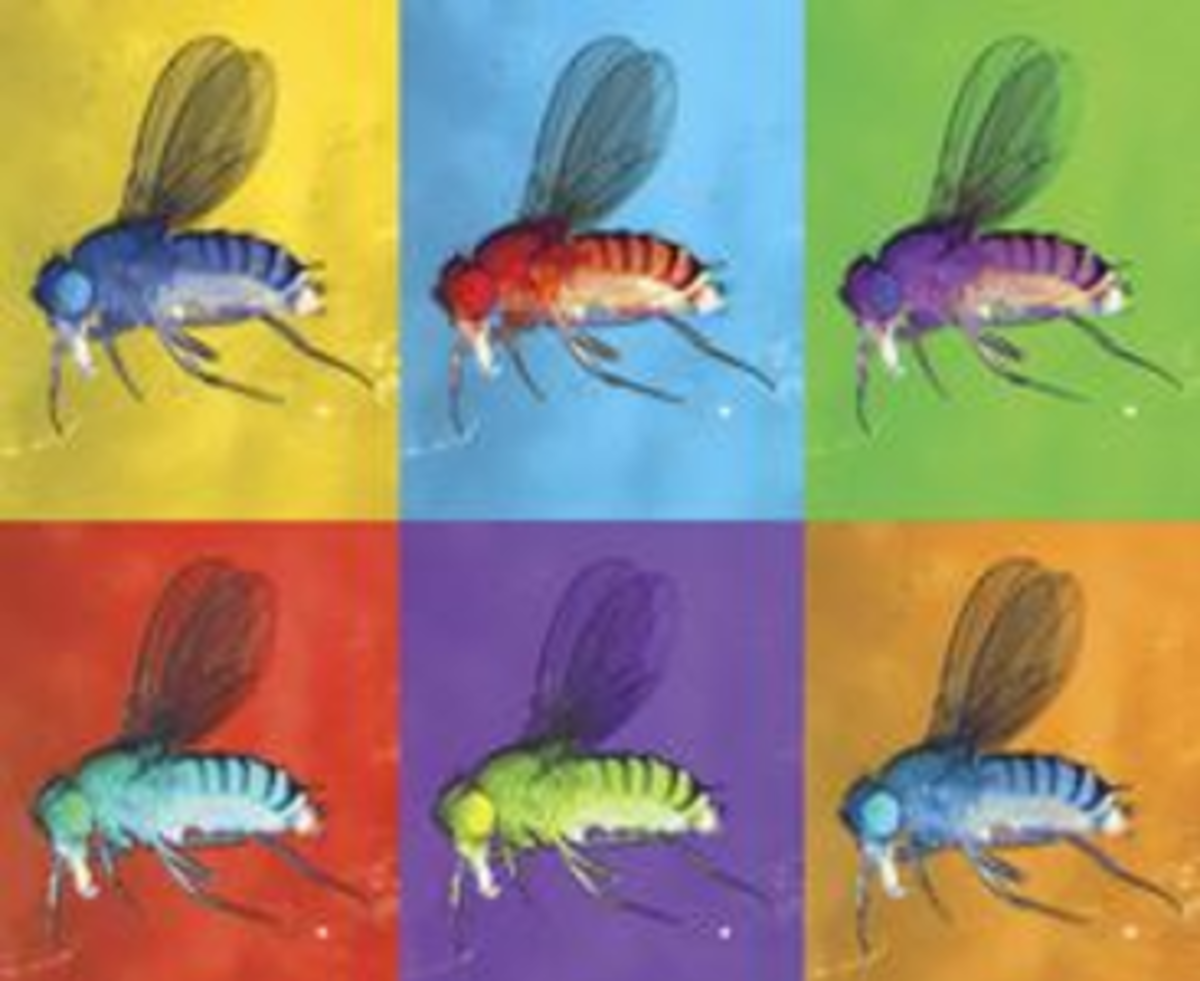Swiss Cheese, Cheap Date, Ken and Barbie - no, this is not a sticky love story, this is serious science. Fruit flies (Drosophila melanogaster) are the favorite model organisms of most geneticists. Researchers consider Drosophila melanogaster as the “poster child” because they carry many genes that are orthologs to the genes in vertebrates. Those folks' genes carry fascinating names, ranging from funny to slightly disturbing. Here is a list of our 10 favorite mutant gene names and their functions.

1. Swiss Cheese
The swiss cheese mutant flies develop normally during larval life but show age-dependent neurodegeneration in the pupa and have a reduced life span. The brain of mutant flies has holes, just like a Swiss cheese!1
2. Cheap Date
Flies with a mutation in this gene are very susceptible to alcohol2. Interestingly, this gene is alternatively known as amnesiac, since mutations in this gene also causes memory impairment3.
3. Boss gene (bride of sevenless)
This gene encodes a cell-surface receptor tyrosine kinase and helps in photoreceptor cell development in the fruit fly compound eye. The flies carrying the boss mutation fail to differentiate into a specific photoreceptor cell line4. Bride of sevenless gets its name from being the ligand which is bound to sevenless5,6.
4. Clown
This gene plays an important role in development and flies carrying this mutation have an altered neuronal differentiation pattern. Because of this, the eyes of the clown flies are a mosaic of white and red7,8.
5. Ken and Barbie
Mutations in this gene locus are accompanied by the malformation of Terminalia in adult drosophila. Male and female genitalia often remain inside the body, meaning they lack external genitalia just like our plastic childhood friends Ken and Barbie9. Luckily for us, there is no human equivalent of Ken and Barbie, although it’s distantly related to a gene called BCL6 which is involved in lymphoma.
6. Van Gogh
Mutations in the Van Gogh result in altered polarity of the adult fruit fly’s cuticular structures and result in swirling of hair on the wing – hence the reference to Van Gogh10.
7. Dreadlocks
This gene encodes an adapter protein which is required for photoreceptor axon targeting and guidance. The R cell projection in dreadlocks gene mutants become disorganized and clump together, just like dreadlocks11.
8. Halloween Genes
This group of genes includes disembodies, spook, spookier, shadow, shade, shroud and phantom. All encode P450 enzymes which are involved in the synthesis of steroid hormones12. Flies with mutations in Halloween Genes have altered exoskeleton development, giving the embryos a spooky appearance.
9. Dachshund
This gene encodes a nuclear protein that is involved in the development of the compound eye which also plays a role in leg development. Mutations within this gene result in flies that have crippled legs, resembling a dachshund13.
10. Indy Gene (I’m not dead yet)
The Indy gene encodes for an intermediate transporter protein in the Krebs Cycle. Mutant versions of this gene have doubled the average life span of fruit flies in at least one set of experiments14,15. There is some controversy surrounding this gene, which reports that the Indy mutation does not result in increased longevity16.
Literature
- Kretzschmar D et al. (1997). The Swiss cheese mutant causes glial hyperwrapping and brain degeneration in Drosophila. J Neurosci. 17:7425–32.
- Moore MS et al. (1998). Ethanol intoxication in Drosophila: Genetic and pharmacological evidence for regulation by the cAMP signaling pathway. Cell. 1998 93:997–1007.
- Quinn WG et al. (1979) The Drosophila memory mutant amnesiac. 277:212–4.
- Reinke R et al. (1988) Cell-cell interaction in the Drosophila retina: the bride of sevenless gene is required in photoreceptor cell R8 for R7 cell development.Cell 55:321–30.
- Harris WA et al. (1976) Genetic dissection of the photoreceptor system in the compound eye of Drosophila melanogaster. J Physiol. 256:415–39.
- Tomlinson A et al. (1986) Sevenless: a cell-specific homeotic mutation of the Drosophila eye. Science. 231:400–2.
- Wemmer T et al. (1995). A genetic analysis of the Drosophila closely linked interacting gene bulge, argos and soba.Genetics. 140:629–41.
- Taguchi A et al. (2000) Mutations modulating the Argos-regulated signaling pathway in Drosophila eye development. Genetics. 154:1639–48.
- Lukacsovich T et al. (2003) The ken and barbie gene encoding a putative transcription factor with a BTB domain and three zinc finger motifs functions in terminalia development of Drosophila. Arch Insect Biochem Physiol. 54:77–94.
- Taylor J et al. (1998) Van Gogh: a new Drosophila tissue polarity gene. 150:199–210.
- Garrity PA (1996) Drosophila photoreceptor axon guidance and targeting requires the dreadlocks SH2/SH3 adapter protein. Cell. 85:639–50
- Gilbert LI (2004) Halloween genes encode P450 enzymes that mediate steroid hormone biosynthesis in Drosophila melanogaster. Mol Cell Endocrinol. 215:1-10.
- Mardon G et al. (1994) dachshund encodes a nuclear protein required for normal eye ad leg development in Drosophila.Development. 120:3473–86.
- Rogina B et al. (2000) Extended life-span conferred by cotransporter gene mutations in Drosophila. Science 290:2137–40.
- Neretti N et al. (2009) Long-lived Indy induces reduced mitochondrial reactive oxygen species production and oxidative damage. PNAS 106:2277–82
- Toivonen JM et al. (2007) No Influence of Indy on Lifespan in Drosophila after Correction for Genetic and Cytoplasmic Background Effects. PLoS Genetics3:e95.
